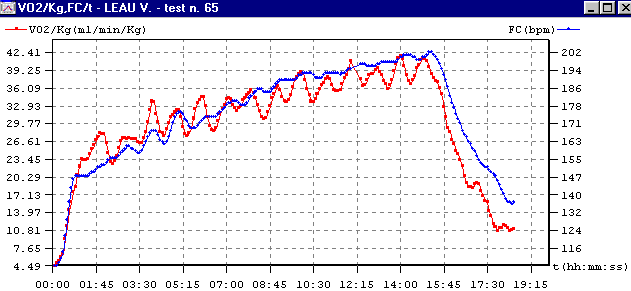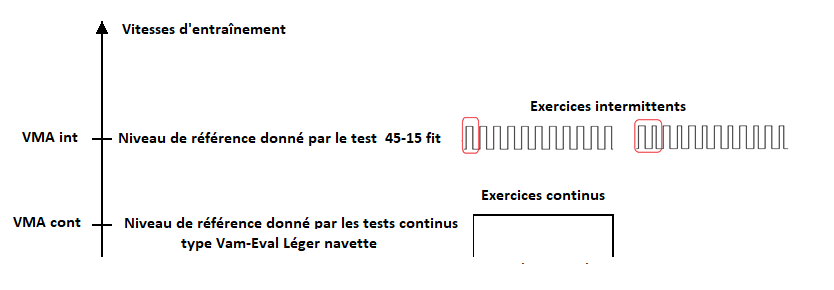We hear that intermittent tests overestimate the MAS?
It is clear that the VMAs assessed, using certain intermittent tests, are higher than those of continuous tests and this is particularly the case with the 45-15.But is this an overvaluation?
We know that the aim of a test is to evaluate the VMA, in other words the vVO2 max, i.e. the maximum capacity of the aerobic engine of sportsmen. However, during a comparative study between the Brue test behind a cyclist (continuous test) and the 45-15 FIT test (intermittent), carried out by H. Assadi (University of Dijon), it was shown that both tests identify VO2max and FC max and that they only differ in the speeds reached under these two forms of motor skills.

Test 45-15 FIT (intermittent)

Brue test behind cyclist (continuous)
He found that the VO2max achieved in the last stage were almost identical in the two types of tests, which proves that the VMA assessed by the 45-15 does not overestimate the VO2max, which is essential. Indeed, the short break between each level allows the myoglobin to recharge with oxygen and thus allow the athlete to last longer and successfully complete a greater number of stops and finish at a higher speed than in a continuous test.

This leads us to distinguish two forms of MAS, one continuous and the other intermittent. As the first tests were carried out in the laboratory and were continuous, they were associated with “continuous effort VMA” and this VMA, evaluated in this way, became the standard.
But in the field, we realised that this “continuous MAS” was too easy to repeat during intermittent training, and above all that it did not allow the athlete to reach his VO2 max during the effort, it had to be increased and moreover by trial and error (around 110%).
However, if a 45-15 FIT test is performed, the speed of the last stage completed in full becomes the 100% reference for calibrating customised intensities. As it has been shown that the speed limit of the 45-15 FIT test is a true vVO2 max, it is therefore false to say that this test overestimates the VMA and it is even the opposite because the technical precision is much better than a hazardous extrapolation.
To sum up, we note that it is no longer necessary to refer to a “continuous MAS” to calibrate intermittent training, which seems more logical (the continuous MAS will be reserved for continuous efforts such as the 1000M, 2000M for example).

If your training includes a majority of intermittent exercises (football), it is recommended to choose a reference test of the same nature, i.e. intermittent. However, if your training also includes a lot of continuous exercises (middle-distance), it is recommended to do two tests, one continuous and one intermittent








